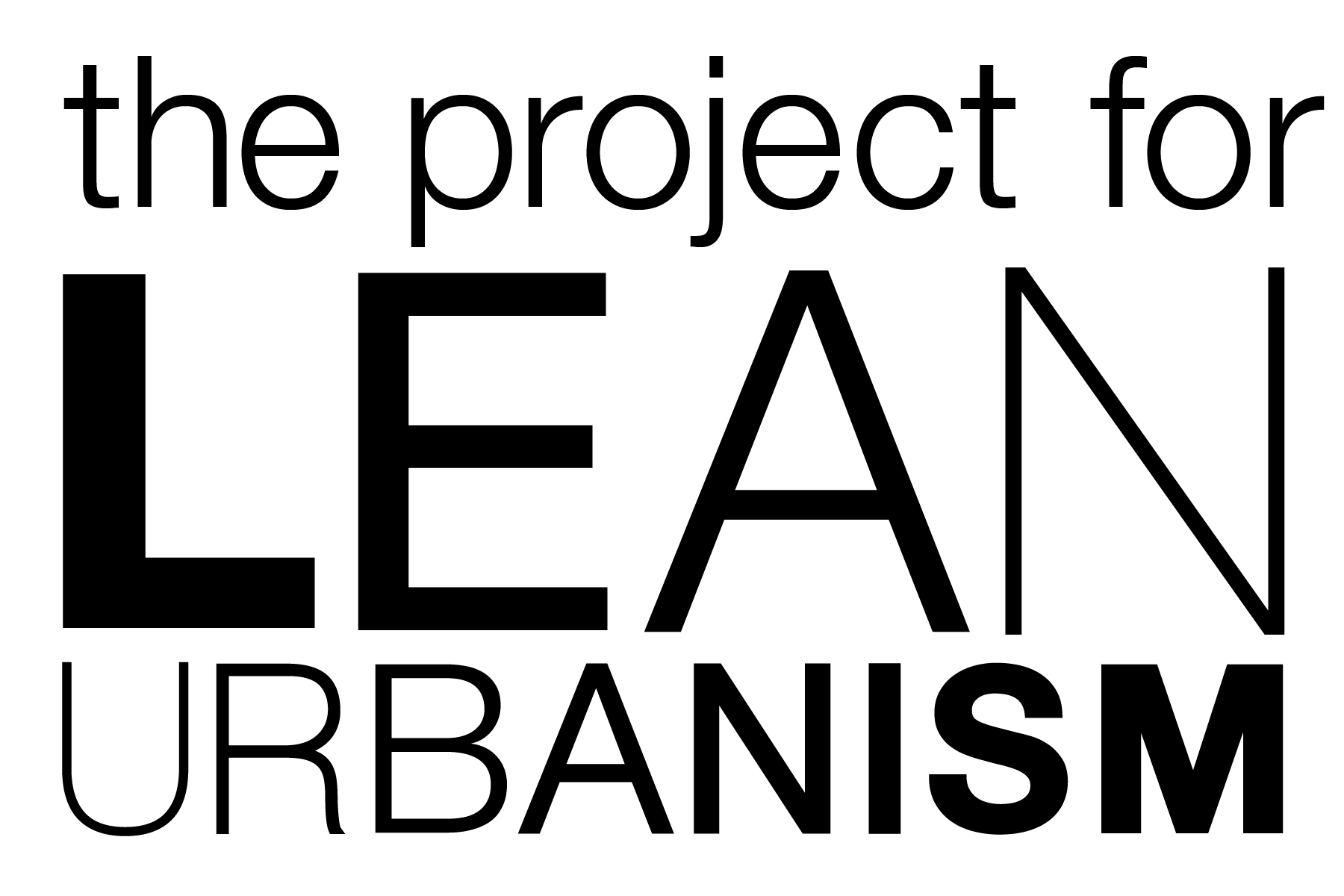Before the Model
Before starting your model, do a market study to determine whether the neighborhood supports new construction. Very few neighborhoods do. Most neighborhoods support only the operation of buildings — collecting rent and maintaining, but not renovating them — while some support investment in renovation but not new construction. If your market study shows that new construction is not supported, don’t force it. Forcing it will require a subsidy, and subsidies are not Lean.
Whether a neighborhood supports new construction depends largely on two market variables: market rent and capitalization rate of existing buildings. Market rent is the current average rent per square foot of comparable units. Many people are confused, as I was, by “market cap rate.” A capitalization or “cap” rate is simply the annual income generated by a thing divided by the one-time payment or capital required to make or buy it. Thus market cap rate is the ratio of the average annual net operating income to the price of recently sold comparable buildings.
Your project’s particular cap rate is its annual return — market rent minus expenses divided by the capital required to develop it — which must be a certain amount higher than market cap rate to attract investors and lenders. These concepts are explained in a bit more detail below, but I mention them now to show that your project’s viability is inseparable from the market.
The comparable buildings or “comps” that you include in your study need not be many (five to 10), but should be in the same neighborhood as your project and with similar units and features. For example, if your project has no parking, study buildings with no parking. Your investors and lender will likely do their own market studies, and want to see maximum overlap between your comps and theirs. Small-scale developers can find financing from institutional sources such as banks, particularly with a solid financial model. But some developers may want or need to seek non-institutional sources, and will benefit from Jim Heid’s paper on alternatives to institutional capital.
Starting the Model
To create the model, enter these headings across the top of a spreadsheet: Item, Total, Month 1, Month 2, Month 3, etc. A financial model without columns for months can be very helpful for the phase just after “back of the envelope,” but I suggest going directly to a model with months. It will encourage you to think about how money is spent and made over time. If you really have no idea how a particular item will break down month-by-month, just type in the total for now.
In the line below, type these milestones under the month you think they will occur: Project Start (first month you spend any money on the project), Construction Start, Occupancy Start (first tenants move in), Occupancy Stability (month that occupancy exceeds 90%), and Sale.
Do not use separate tabs for sections such as Development Budget, Annual Return, and Capital Return. Switching between tabs introduces more opportunities for error. Instead, just scroll down as you type your model and add sections.
A sample model in spreadsheet form is provided above for readers to familiarize themselves with content and format. The sample generally follows the format discussed below, but with more detail. Text in blue is placeholder and not accurate, and must be changed for each specific project. Readers are strongly encouraged to create their own financial model rather than use the sample, to truly internalize the relationships among variables.
It is important to remember what your financial model does not show. It does not show non-financial aspects, and it does not even show all financial aspects. For example, it does not show financial risks. Some people try to show financial risks with “sensitivity analysis,” making high, medium, and low assumptions about an important variable (for example the property tax rate at the time of sale), and showing how each affects returns. However, you never know which variable will swing — that’s why it’s called risk — so just make slightly but consistently conservative assumptions throughout your model, and know that it can absorb a hit or two.
Development Budget
A developer makes money not by constructing buildings, but by operating and selling them. The development budget, therefore, is “zero sum”: money in equals money out.
Money in is equity investment plus debt. Equity can be cash from friends and family or high-net-worth individuals, or in-kind contributions such as land or services. Debt can be a construction loan from a local bank or a high-net-worth individual.
Money out is land costs plus soft costs plus hard costs. Land costs include the cost of the land itself, plus acquisition costs such as attorney fees and title insurance. Hard costs include land development costs such as grading, drainage, water, sewer, and paving, and vertical construction costs, which are too numerous to list.
Soft costs include “pre-development” costs such as the market study, architecture, and engineering services such as surveying and geotechnical, environmental, and civil engineering, local government fees for impact and permitting, finance costs such as the debt-origination fee and interest on the construction loan, and administrative costs such as accounting, insurance, a reserve for an operating deficit, a contingency reserve, and a development fee. Don’t view the development fee as an opportunity for you to make a profit, but rather as a contingent cost to hire an “owner’s representative” to babysit the general contractor and write investor reports if you become indisposed.
All these costs are capital costs (one-time), not operating expenses (recurring). However, investors and lenders will allow you to use their one-time money to pay for some portions of recurring costs — in other words to “capitalize” costs such as debt interest during construction or operating expenses before your first tenant moves in.
DEVELOPMENT BUDGET
Equity + Loan Proceeds = Capital
Capital – Costs = 0
Annual Return
Your financial model’s second section shows the annual return. This section is often referred to as the “stabilized pro forma.” Top to bottom, it shows that annual operating income minus operating expenses equals a (hopefully) positive number that is net operating income.
Annual return begins the month your project reaches a certain level of occupancy (typically more than 90%), when it is deemed to be “stabilized.” While the “Total” column of the development budget was the sum of all monthly capital or costs, the “Total” column for annual return is the sum of only the first stabilized month and the eleven subsequent months.
Operating income includes market rent, rent increases, other income such as pet fees, minus vacancy loss (typically five percent), any discounts such as “first month free,” or collection losses (typically one percent combined). Operating expenses or “OPEX” include utilities (water for irrigation, electricity for common areas and vacant units), marketing, maintenance, repair, administration, insurance, replacement reserve, management fee, and property taxes.
At the bottom of this section, add operating income (positive) and OPEX (negative) to find net operating income or “NOI.” Lastly, divide NOI by total capital (equity plus debt) from the development budget section to find your project’s particular cap rate, its annual return on capital (or “ROC”). This is the first opportunity in your project’s financial model to show a return for your investors, your lender, and you. Annual ROC should be approximately 2% higher than the market cap rate, and you should not pursue a project with a lower annual ROC. For example, if the market cap rate is five percent (comps are selling for 20 times their NOI), your project’s annual ROC should be seven percent or higher.
Why? Because real estate development is risky — local government risk, construction risk, occupancy risk, rent risk, cap rate risk, interest rate risk, etc. — and risk requires reward. Investors will simply buy existing buildings that are generating 5% annual return unless they see that new construction returns significantly more to compensate for the additional risk.
ANNUAL RETURN
Operating Income – Operating Expenses = NOI
NOI / Capital = Annual Return % = Cap Rate
Capital Return
The next section, Capital Return, is your exit strategy. It shows capital return when you sell your project: sale price (positive) plus cumulative NOI (positive) plus sale cost (negative) equals proceeds to distribute. This section requires just the first two columns, not all the months. Your financial model should assume a sale of the completed building three months after stabilization. If you want to keep the building, you will have to deal with the fast-approaching repayment date for the construction loan, but if you can sell your building for a profit by that date, you can also refinance it.
To determine total sale price, multiply the NOI in the month of sale by 12 and divide by the projected market cap rate at that time. For example, if monthly NOI is $7k, then annual NOI is $84k, and if the projected market cap rate is 6%, then sale price is $1.4M. To the sale price, add the sum of all monthly NOI before the month that you sell (including before the project stabilized). Then subtract costs associated with the sale (such as lawyers and taxes, which should total approximately 0.5 percent of the sale price).
The remainder is to be distributed to your capital partners — first your lender, then your investors. Subtract your construction debt principal and post-occupancy interest (pre-occupancy interest was capitalized). Then subtract total equity investments. In other words investors don’t lose money; they at least get their money back. This is the most important thing your model shows, even more important than annual return.
The remainder is capital gains for your investors and you. This is the third-most important thing your model shows. Divide this gain by total capital from the development budget to determine total (not annual) ROC, and divide it by total equity investment to show the total return on equity.
CAPITAL RETURN
NOI / Market Cap Rate = Sale Price
Sale Price – Sale Costs = Sale Proceeds
Sale Proceeds + Cumulative NOI – Capital – Loan Interest = Profit
Profit / Capital = Capital Return %
Profit / Equity = Equity Return %
With a simple financial model showing development budget, annual return, and capital return, the hard — but rewarding — work can begin!
Andrew Frey is a development manager at CC Residential, a developer of luxury rental apartment communities. He is also executive director of Townhouse Center, a not-for-profit that promotes fine-grain urban neighborhoods. Previously he was a zoning lawyer and an urban planner. He has a law degree from the University of Michigan and a BA from Boston College.

